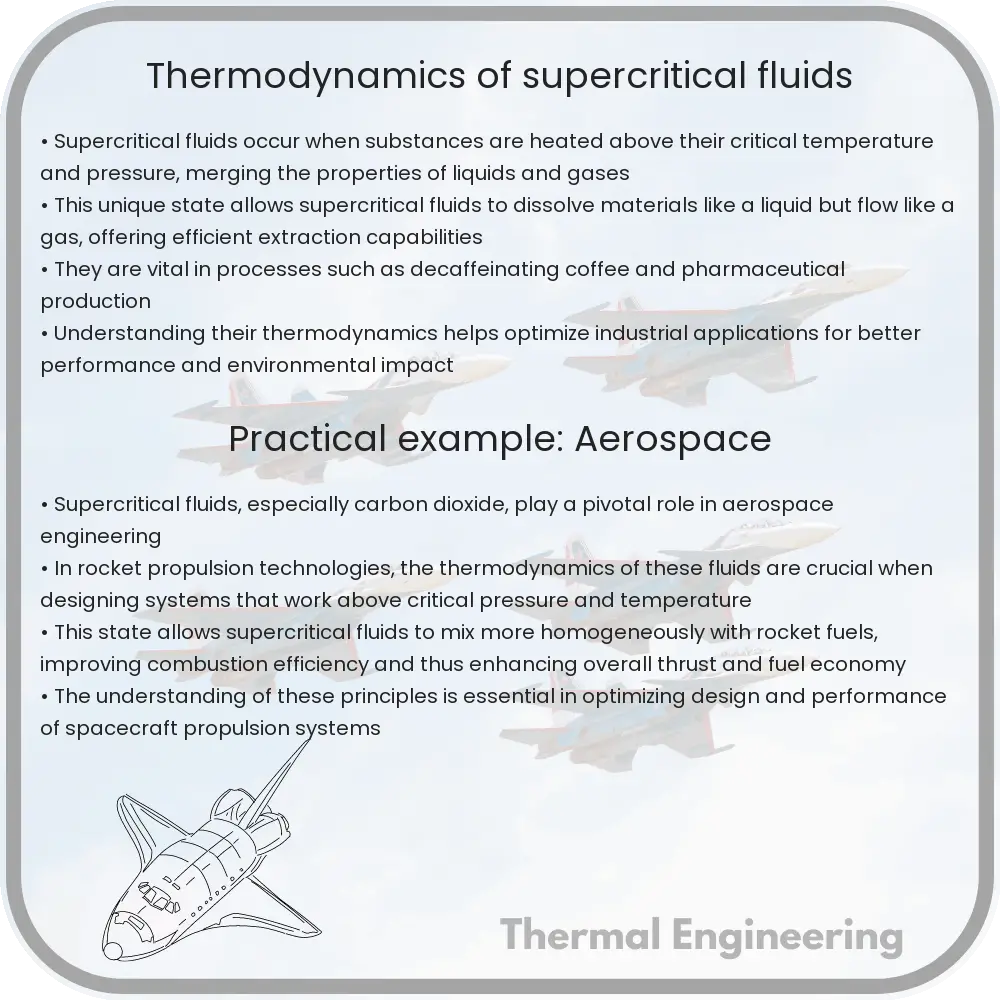Learn about supercritical fluids, states of matter at high temperature and pressure with unique properties bridging gases and liquids.

Understanding the Thermodynamics of Supercritical Fluids
Supercritical fluids (SCFs) are substances at conditions above their critical temperature and critical pressure, where gases and liquids can coexist. This state results in unique properties that are intermediate between gases and liquids, making SCFs highly valuable in various engineering and scientific applications.
What Defines a Supercritical Fluid?
A substance becomes supercritical when it is heated above its critical temperature (Tc) and compressed above its critical pressure (Pc). At the critical point, the distinction between liquid and gas phases disappears. This is due to the drastic decrease in the density difference between the phases.
Properties of Supercritical Fluids
- Enhanced Diffusivity: Compared to liquids, SCFs have higher diffusion coefficients, closer to those of gases, which helps in faster mixing and mass transfer.
- Variable Viscosity: SCFs have lower viscosities than liquids, easing the processing of materials, and can be adjusted by changing the temperature or pressure.
- Variable Density: The density of SCFs is higher than that of gases but lower than liquids. Density can be tuned sensitively by adjusting temperature and pressure, affecting the solvent power.
Thermodynamic Principles of Supercritical Fluids
The behavior of supercritical fluids is typically described by equations of state (EOS), which relate pressure, temperature, and volume. The most commonly used EOS is the van der Waals equation, modified to fit better the behavior at supercritical conditions:
\[ P = \frac{RT}{V_m – b} – \frac{a}{V_m^2 + 2bV_m – b^2} \]
where P is the pressure, T is the temperature, Vm is the molar volume, R is the gas constant, and a and b are substance-specific parameters.
Applications of Supercritical Fluids
- Supercritical Fluid Extraction (SFE): Utilizing the solvent properties of SCFs, SFE is a key technique for extracting desired components with high efficiency and without the use of harmful solvents.
- Chemical Reaction Engineering: The unique properties of SCFs can be harnessed to improve reaction rates and yields in chemical processes.
- Pharmaceuticals: SCFs are used in the pharmaceutical industry for the precise processing of drugs, enhancing the bioavailability of medications.
Thermodynamic Challenges in Working with Supercritical Fluids
Despite their advantages, supercritical fluids pose certain challenges:
- Control of State: Maintaining precise temperature and pressure to keep a substance in the supercritical state requires sophisticated equipment and control systems.
- Equipment Material Requirements: The high pressures and temperatures involved demand materials that can withstand extreme conditions without degrading.
In conclusion, supercritical fluids offer a fascinating area of study within thermodynamics and engineering. Their unique properties enable revolutionary applications across various industries, but they also require careful handling and understanding of their complex behavior.
As research and technology advance, the potential for new and innovative uses of supercritical fluids is vast, highlighting the importance of ongoing studies in this dynamic field.